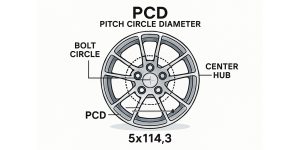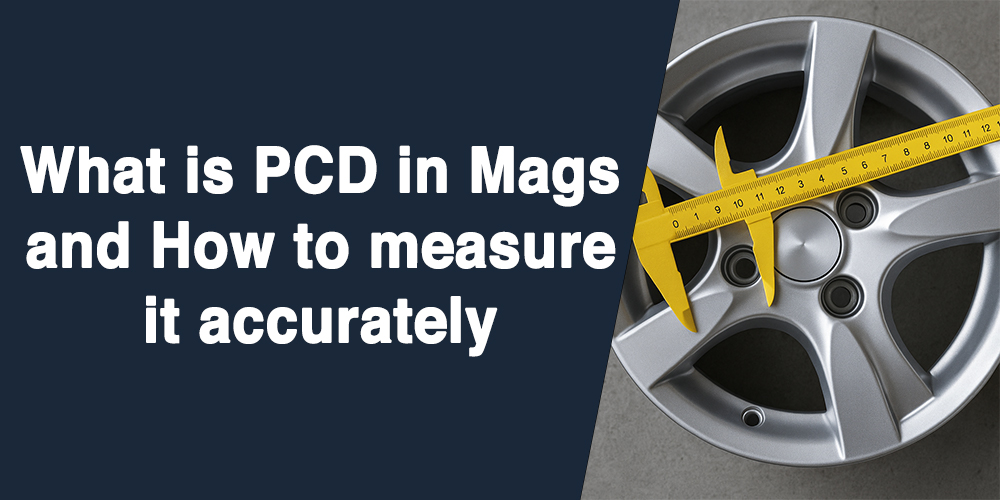PCD is short for
Pitch Circle Diameter, which is a term meaning the diameter of an imaginary circle that runs through the centres of all of the mags bolt holes. Knowing what PCD is in mags is an important specification to consider when fitting mags to a vehicle. Incorrect PCD fitting may end with the mags not fitting the hub in a secure manner, and incorrectly fitting the mags may cause the vehicle to not be aligned correctly & can cause undue stress on the stud or bolt.
PCD is normally stated or noted in a preference such as 5×114.3, where the first numeral (5) is the number of studs or bolts and the second numeral (114.3) is the diameter of the bolt circle in millimeters. Learn everything about mags here at
KGCAR.PH.
Common PCD Patterns in Passenger Vehicles
Most passenger vehicles use PCD configurations with 4, 5, or 6 bolts. Unusual cases include:
- 3-stud mags, seen on models like Smart cars.
- 8-stud mags, common on larger U.S. pickup trucks, especially as they enter markets like Australia.
Examples of Common PCDs:
- 4×100 – Compact vehicles
- 5×114.3 – Widely used across Japanese, Korean, and American cars
- 6×139.7 – Common in 4WD and utility vehicles
- 8×165.1 – Heavy-duty pickup trucks
How to Determine Your Vehicle’s PCD
1. Check the mags or Owner’s Manual
Many OEM
mags have PCD information stamped on the inside. Alternatively, the owner’s manual or manufacturer specifications online will list the PCD when you search by year, make, and model.
2. Count the Bolt Holes
Remove the mags cover if needed. Count the number of bolts or studs to get the first number in the PCD value.
3. Measure the Diameter Based on Bolt Count
The method for measuring PCD depends on whether the number of bolts is even or odd.
Measuring PCD: Step-by-Step Instructions

For Even-Numbered Bolt Patterns (e.g., 4 or 6)
Use a ruler or caliper to measure from the center of one bolt to the center of the bolt directly opposite.
Example:
- 4 bolts, opposite bolts measure 100mm apart
→ PCD = 4×100
For Odd-Numbered Bolt Patterns (e.g., 3 or 5)
Measure from the center of one bolt to the center of an adjacent bolt. Then apply a specific multiplication factor:
| Bolt Count |
Multiply the Adjacent Bolt Distance By |
Example |
| 3 |
1.154 |
78mm x 1.154 = 90mm PCD |
| 5 |
1.7012 |
67mm x 1.7012 = 114mm PCD |
Important Notes on PCD Compatibility
- PCD must match exactly between the mags and the hub.
- Even a slight variation (e.g., using 5×112 mags on a 5×114.3 hub) can cause vibration or unsafe driving conditions.
- Many aftermarket mags list PCD clearly on the back or in the specifications sheet.
PCD and mags Fitment
While PCD is one factor in determining if a mag fits, other important measurements include:
- Center Bore: Diameter of the hole at the center of the mags.
- Offset (ET): Distance from the mag’s hub mounting surface to the centerline.
- Bolt Thread Size: The Thread pitch and diameter of the mag bolts or nuts.
Conclusion
To safely install or replace
mags, knowing the correct PCD is essential. Always verify the bolt count and use accurate measurement methods. Misaligned mags due to incorrect PCD can compromise performance, safety, and wear on suspension components. Proper tools and exact figures eliminate guesswork and ensure secure, balanced mag mounting.

